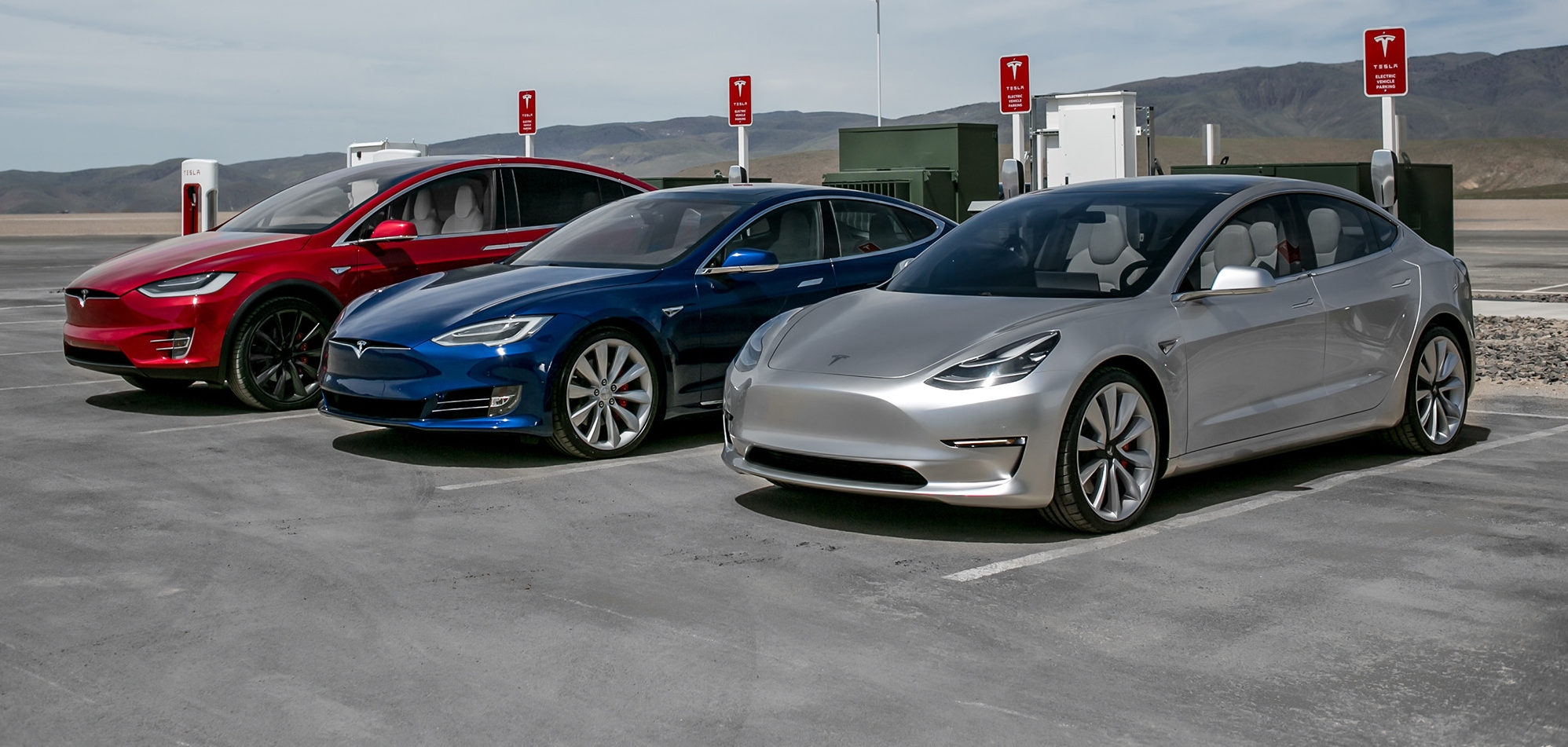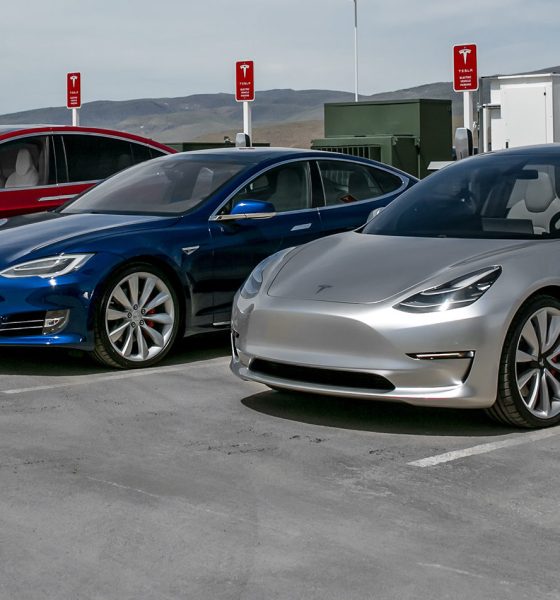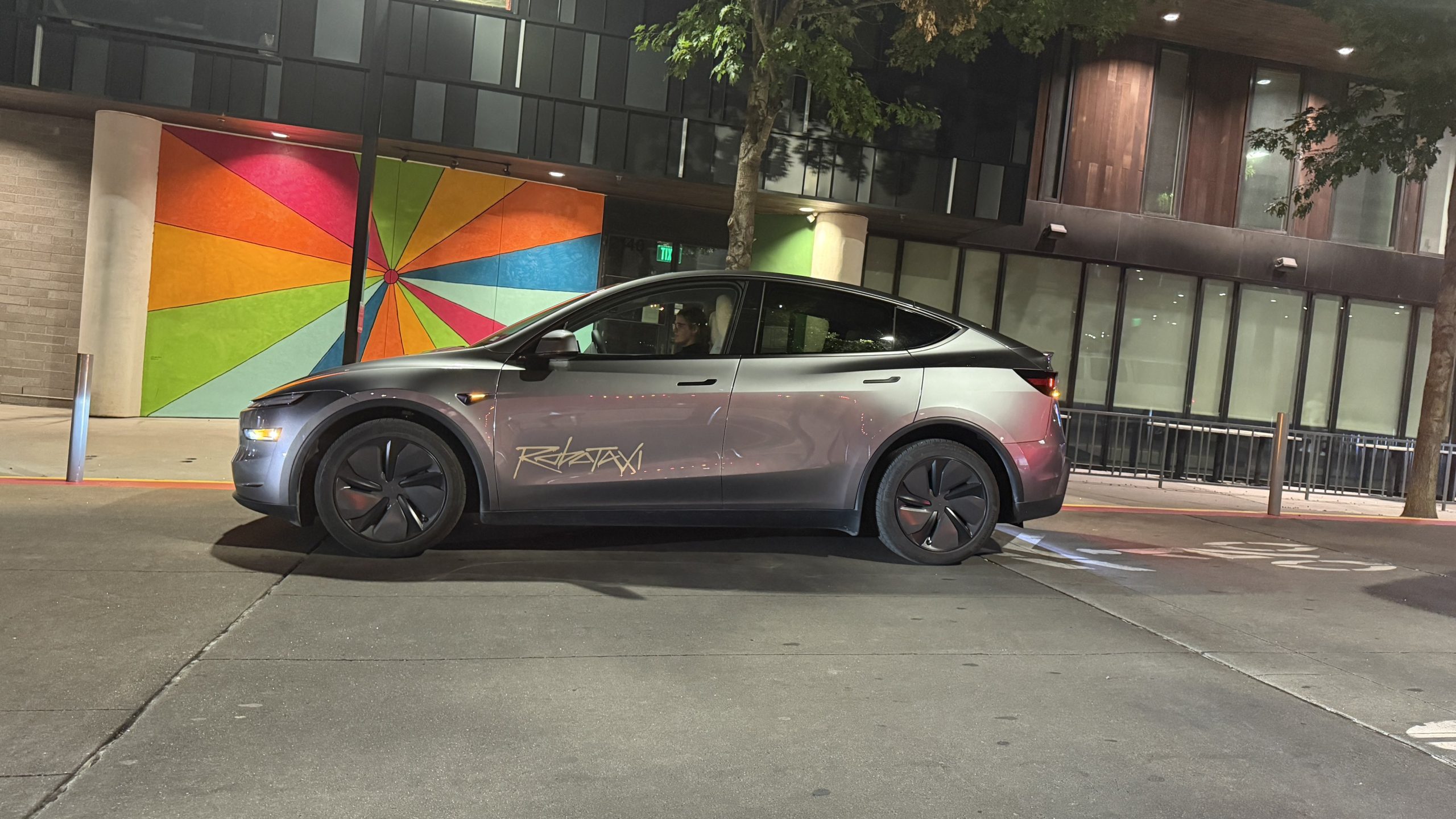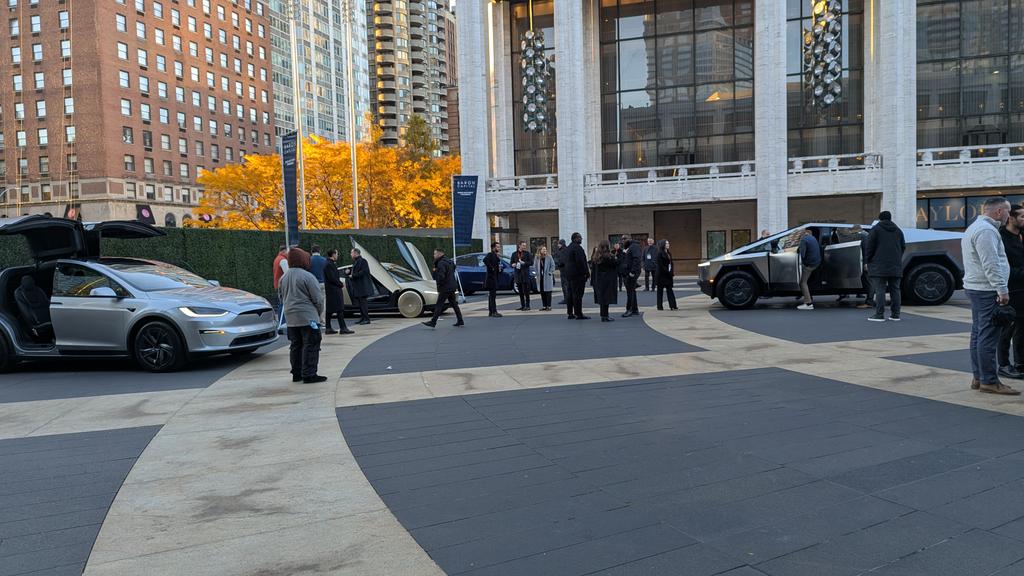

Investor's Corner
The Tesla Killer’s death and Elon Musk’s long-term play on batteries, vertical integration
At a press conference last year at Volkswagen’s global headquarters in Wolfsburg, Germany, VW Chairman of the Board Herbert Diess stated that “anything that Tesla can do, we can surpass.” The VW boss even noted that its dedicated MEB electric car architecture would give the company cost advantages at a scale that’s out of Tesla’s reach.
This year, the Tesla Model 3 is steadily making its presence known in the United States auto market. In September alone, the Model 3 was listed as the 4th best-selling passenger car in the US, beating the ubiquitous Toyota Corolla Family. Tesla also finished Q3 on a strong note, manufacturing a total of 80,142 electric cars including 53,239 Model 3, as well as delivering a total of 83,500 vehicles, comprised of 55,840 Model 3, 14,470 Model S, and 13,190 Model X. This Q4, Tesla seems poised to deliver and produce an even more impressive number of vehicles.
For years, Tesla skeptics have pointed at upcoming competition from legacy automakers as a reason for the impending fall of the electric car maker. Just like Herbert Diess, many of Tesla’s critics pointed out that legacy auto’s years of experience, as well as their network of factories, should allow them to leapfrog Tesla in the electric car market as soon as they decide to enter the electric car market.
As companies like Mercedes-Benz, Audi, Jaguar, and Porsche are learning today, though, it is not so simple to build a compelling electric car that’s capable of challenging Tesla’s premium vehicles in their respective segments. Mercedes-Benz, for one, has announced that the EQC — its plush competitor for the Model X — will adopt a gradual rollout due to possible warranty concerns over the vehicle’s battery and other electric car components. German news agency Bild am Sonntag recently noted that the Audi e-tron would be released later than expected as well, due to a software issue and ongoing discussions with its battery provider, LG Chem, which is allegedly adjusting the price of the vehicle’s batteries.
Even legacy carmakers that seem to be fully embracing the transition to electrified transport seem to be learning a lesson in designing and producing electric cars. Jaguar, for one, recently confirmed that the I-PACE has a range of 234 miles per charge, lower than the company’s initial estimates for the vehicle. Porsche, on the other hand, is preparing to build the Taycan, but even workers at its plant in Stuttgart, Germany have to pitch in to make the car a reality. Porsche head of production Albrecht Reimold, for one, noted that employees at the Taycan’s upcoming factory would not have regular salary increases for the next few years as the Taycan’s factory gets constructed.
With legacy automakers revealing their highly-anticipated Tesla competitors, and with each company running into challenges of their own, analysts are starting to retire myth of the “Tesla Killer.” Last month, Toni Sacconaghi of Bernstein, a known skeptic of the electric car maker, stated that the Model 3 faces “no credible competition” from legacy auto until at least 2020. More recently, Berenberg analyst Alexander Haissl reiterated a Buy rating on TSLA stock with a $500 price target, stating that fears over competition from legacy automakers are overblown. Haissl further noted that Tesla’s driving ranges and vehicle efficiencies are well ahead of the competition.
Perhaps the most notable death knell on the Tesla Killer myth came from known TSLA short-seller-turned-long Andrew Left of Citron Research; who pointed out that “there is NO Tesla killer. Competition is nowhere to be found, and no electric vehicle is slated to launch at the Model 3 price point until 2021.”
Ultimately, Tesla’s prominent lead in the electric car market is the culmination of Elon Musk’s long-term play on electric car batteries and the company’s vertical integration. Since Tesla is producing its own battery cells from Panasonic’s lines in Gigafactory 1, the company is saving itself from any of the issues currently being faced by Audi as it struggles to reach a deal with LG Chem for the e-tron’s batteries, or Mercedes-Benz as it deals with uncertainties over the EQC’s battery warranty. The deep integration of Tesla’s hardware and software also creates a unified user experience that is not unlike Apple, allowing the company’s electric cars to perform at their best and preventing issues such as those being faced by Jaguar with regards to the I-PACE’s apparent inefficiency.
The death of the Tesla Killer and the improvements in Tesla’s Model 3 ramp, together with the announcement that the Q3 2018 earnings call would happen on Wednesday, appear to have improved investor sentiment for the company’s stock. On Tuesday, Tesla stock (NASDAQ:TSLA) rose $33.19, ending the day at $294.14, up 12.72% from Monday’s close.

Investor's Corner
Tesla wins $508 price target from Stifel as Robotaxi rollout gains speed
The firm cited meaningful progress in Tesla’s robotaxi roadmap, ongoing Full Self-Driving enhancements, and the company’s long-term growth initiatives.

Tesla received another round of bullish analyst updates this week, led by Stifel, raising its price target to $508 from $483 while reaffirming a “Buy” rating. The firm cited meaningful progress in Tesla’s robotaxi roadmap, ongoing Full Self-Driving enhancements, and the company’s long-term growth initiatives.
Robotaxi rollout, FSD updates, and new affordable cars
Stifel expects Tesla’s robotaxi fleet to expand into 8–10 major metropolitan areas by the end of 2025, including Austin, where early deployments without safety drivers are targeted before year-end. Additional markets under evaluation include Nevada, Florida, and Arizona, as noted in an Investing.com report. The firm also highlighted strong early performance for FSD Version 14, with upcoming releases adding new “reasoning capabilities” designed to improve complex decision-making using full 360-degree vision.
Tesla has also taken steps to offset the loss of U.S. EV tax credits by launching the Model Y Standard and Model 3 Standard at $39,990 and $36,990, Stifel noted. Both vehicles deliver more than 300 miles of range and are positioned to sustain demand despite shifting incentives. Stifel raised its EBITDA forecasts to $14.9 billion for 2025 and $19.5 billion for 2026, assigning partial valuation weightings to Tesla’s FSD, robotaxi, and Optimus initiatives.
TD Cowen also places an optimistic price target
TD Cowen reiterated its Buy rating with a $509 price target after a research tour of Giga Texas, citing production scale and operational execution as key strengths. The firm posted its optimistic price target following a recent Mobility Bus tour in Austin. The tour included a visit to Giga Texas, which offered fresh insights into the company’s operations and prospects.
Additional analyst movements include Truist Securities maintaining its Hold rating following shareholder approval of Elon Musk’s compensation plan, viewing the vote as reducing leadership uncertainty.
@teslarati Tesla Full Self-Driving yields for pedestrians while human drivers do not…the future is here! #tesla #teslafsd #fullselfdriving ♬ 2 Little 2 Late – Levi & Mario
Investor's Corner
Tesla receives major institutional boost with Nomura’s rising stake
The move makes Tesla Nomura’s 10th-largest holding at about 1% of its entire portfolio.

Tesla (NASDAQ:TSLA) has gained fresh institutional support, with Nomura Asset Management expanding its position in the automaker.
Nomura boosted its Tesla holdings by 4.2%, adding 47,674 shares and bringing its total position to more than 1.17 million shares valued at roughly $373.6 million. The move makes Tesla Nomura’s 10th-largest holding at about 1% of its entire portfolio.
Institutional investors and TSLA
Nomura’s filing was released alongside several other fund updates. Brighton Jones LLC boosted its holdings by 11.8%, as noted in a MarketBeat report, and Revolve Wealth Partners lifted its TSLA position by 21.2%. Bison Wealth increased its Tesla stake by 52.2%, AMG National Trust Bank increased its position in shares of Tesla by 11.8%, and FAS Wealth Partners increased its TSLA holdings by 22.1%. About 66% of all outstanding Tesla shares are now owned by institutional investors.
The buying comes shortly after Tesla reported better-than-expected quarterly earnings, posting $0.50 per share compared with the $0.48 consensus. Revenue reached $28.10 billion, topping Wall Street’s $24.98 billion estimate. Despite the earnings beat, Tesla continues to trade at a steep premium relative to peers, with a market cap hovering around $1.34 trillion and a price-to-earnings ratio near 270.
Recent insider sales
Some Tesla insiders have sold stock as of late. CFO Vaibhav Taneja sold 2,606 shares in early September for just over $918,000, reducing his personal stake by about 21%. Director James R. Murdoch executed a far larger sale, offloading 120,000 shares for roughly $42 million and trimming his holdings by nearly 15%. Over the past three months, Tesla insiders have collectively sold 202,606 shares valued at approximately $75.6 million, as per SEC disclosures.
Tesla is currently entering its next phase of growth, and if it is successful, it could very well become the world’s most valuable company as a result. The company has several high-profile projects expected to be rolled out in the coming years, including Optimus, the humanoid robot, and the Cybercab, an autonomous two-seater with the potential to change the face of roads across the globe.
@teslarati Tesla Full Self-Driving yields for pedestrians while human drivers do not…the future is here! #tesla #teslafsd #fullselfdriving ♬ 2 Little 2 Late – Levi & Mario
Investor's Corner
Ron Baron states Tesla and SpaceX are lifetime investments
Baron, one of Tesla’s longest-standing bulls, reiterated that his personal stake in the company remains fully intact even as volatility pressures the broader market.

Billionaire investor Ron Baron says he isn’t touching a single share of his personal Tesla holdings despite the recent selloff in the tech sector. Baron, one of Tesla’s longest-standing bulls, reiterated that his personal stake in the company remains fully intact even as volatility pressures the broader market.
Baron doubles down on Tesla
Speaking on CNBC’s Squawk Box, Baron stated that he is largely unfazed by the market downturn, describing his approach during the selloff as simply “looking” for opportunities. He emphasized that Tesla remains the centerpiece of his long-term strategy, recalling that although Baron Funds once sold 30% of its Tesla position due to client pressure, he personally refused to trim any of his personal holdings.
“We sold 30% for clients. I did not sell personally a single share,” he said. Baron’s exposure highlighted this stance, stating that roughly 40% of his personal net worth is invested in Tesla alone. The legendary investor stated that he has already made about $8 billion from Tesla from an investment of $400 million when he started, and believes that figure could rise fivefold over the next decade as the company scales its technology, manufacturing, and autonomy roadmap.
A lifelong investment
Baron’s commitment extends beyond Tesla. He stated that he also holds about 25% of his personal wealth in SpaceX and another 35% in Baron mutual funds, creating a highly concentrated portfolio built around Elon Musk–led companies. During the interview, Baron revisited a decades-old promise he made to his fund’s board when he sought approval to invest in publicly traded companies.
“I told the board, ‘If you let me invest a certain amount of money, then I will promise that I won’t sell any of my stock. I will be the last person out of the stock,’” he said. “I will not sell a single share of my shares until my clients sold 100% of their shares. … And I don’t expect to sell in my lifetime Tesla or SpaceX.”
Watch Ron Baron’s CNBC interview below.
@teslarati :rotating_light: This is why you need to use off-peak rates at Tesla Superchargers! #tesla #evcharging #fyp ♬ Blue Moon – Muspace Lofi








